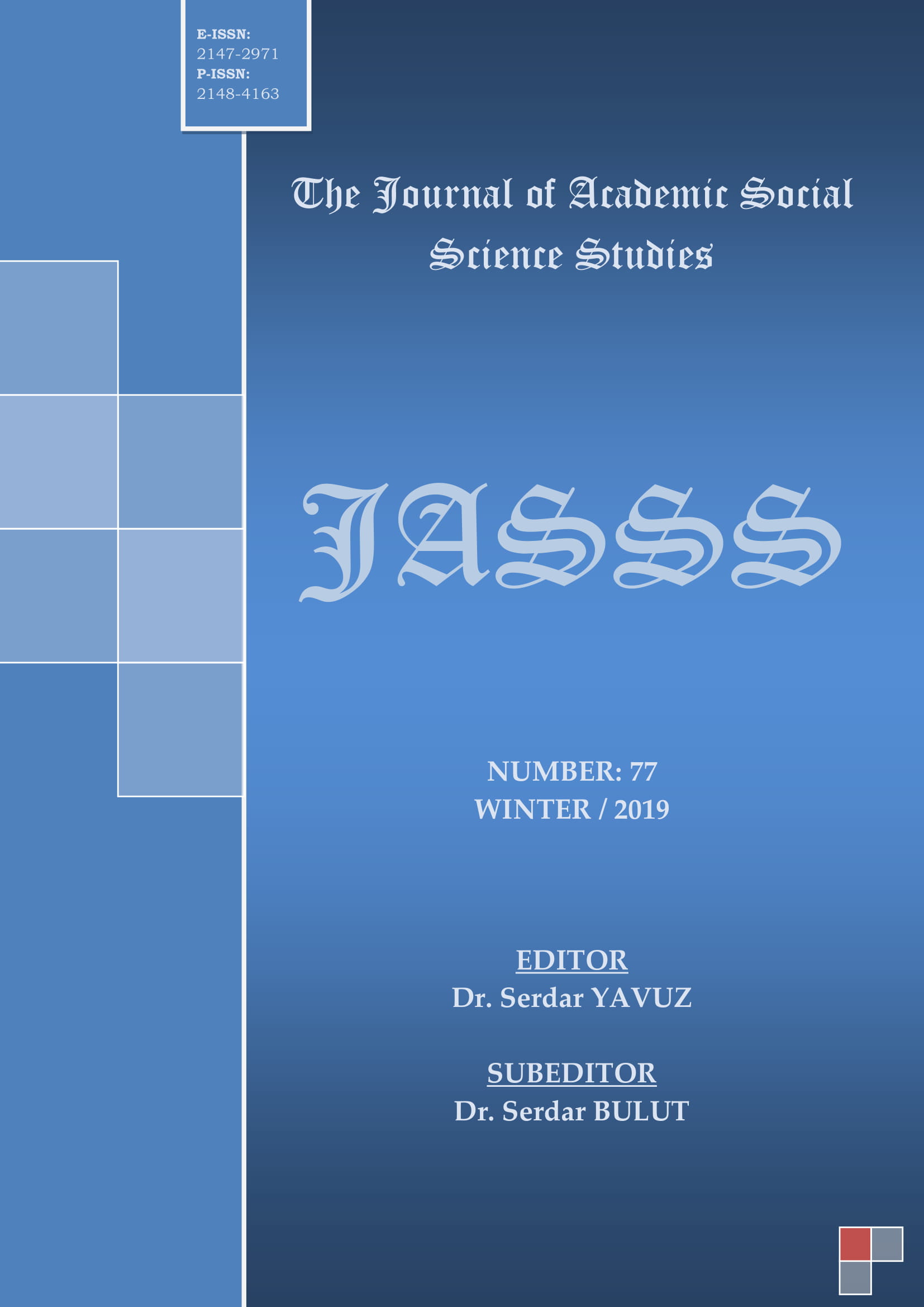Author :
Abstract
Weimar’da (1919-1925) ve Dessau’da altı (1925-1931), Berlin’de (1931-1933) iki yıllık kısa varlığına rağmen Bauhaus 20. yüzyılın en etkin tasarım hareketlerinden birisi olarak kabul edilmektedir. 1919 yılında modern bir sanat okulu olarak kurulan Bauhaus, kurucusu ve yöneticisi olan Walter Gropius ve görev alan diğer tanınmış mimarlardan dolayı, 20. yüzyıl mimarlığına katkılarıyla tanınmaktadır. Oysa 1919 yılından 1933 yılına kadar Bauhaus öğretim programının bir parçası olan Dokuma Atölyesi’nin de tekstil tasarımına katkıları uzun zamandan beri göz ardı edilmiştir. Itten tarafından düzenlenen Vorkurz’da temel zanaat dallarından birisi olarak görülen, ancak daha sonra kadın öğrencilerin uzmanlaşması için yönlendirildiği Dokuma Atölyesi Weimar’da teknik olarak gelişmiş, Dessau’da ise altın çağını yaşamıştır. Bauhaus’da bir kadın kültürü yaratan Dokuma Atölyesi’nin tekstil çalışmaları kumaş dokuma, kilim dokuma ve hasır dokuma tekniklerinde olmuştur. Bireysel ve sanatsal denemelerin yapılmasının ardından tekstil işletmeleri için prototip üretimine ve daha sonra Dessau-Bauhaus etiketiyle kumaşlarını ticari olarak lisanlatmaya uzanan bir başarı öyküsünü 14 yıla sığdıran okul tekstil alanında tasarımcı yetiştirip tekstil diploması veren ilk program olduğu için de ayrı bir öneme sahiptir. Bauhaus kapatıldıktan sonra Amerika ve Avrupa’ya dağılan tasarımcılar Bauhaus geleneğini sürdürmüşler ve efsane bugüne kadar süregelmiştir. Bu makale Bauhaus Dokuma Atölyesi bağlamında Bauhaus dönemine bakmayı amaçlamıştır.
Keywords
Abstract
Inspite of short life span of Bauhaus -6 years in Weimar (between 1919 and 1925) and in Dessau (between 1925 and 1931) and 2 years in Berlin (between 1931 and 1933), it has been accepted as one of the most significant design movements of the 20th century. Bauhaus, founded as a modernist art school in 1919 by Walter Gropius, has been utterly famous for its contributions to the 20th century architecture because of Walter Gropius and other distinguished architects at Bauhaus. However, the contributions made by the Weaving Atelier, a part of the Bauhaus curriculum from foundation till closure to textile design have been neglected for years. The Weaving Atellier, seen as one of the basic handicrafts in the Vorkurz of Itten and defined as the only profession for female students, has improved technically in Weimar and has lived the golden years in Dessau. The practical implementations of the Weaving Atelier that has formed a women culture inside the Bauhaus have been on tapestry weaving, fabric weaving and wall mat weaving. The school that has embedded one of the greatest success stories in Bauhaus ranging from primitive artistic weaving designs to protoype fabric production for the industry and licencing the fabrics as Dessau-Bauhaus, in a period of 14 years, has another importance since it educated the first textile designers from the first diploma curriculum. After its closure the Bauhaus designers scattering all to USA and Europe continued the Bauhaus legacy. Thus this article aims to investigate the Bauhaus period form the context of Weaving Atelier.
Keywords
- Alpar, S. (2006). Bauhaus’un Sahne Tasarımına Etkileri, Basılmamış Yüksek Lisans Tezi, Dokuz Eylül Üniversitesi Güzel Sanatlar Enstitüsü, İzmir.
- Aslan, R. (2015). Gerçeküstücü Harekette Ütopya Kavramı, Trakya Üniversitesi Sosyal Bilimler Dergisi, Aralık-2015 17(2):37-47.
- Aslanoğlu, İ. (1988). Modernizmin Tanımı, Sınırları, Erken Yirminci Yüzyıl Mimarlığında Farklı Tavırlar, ODTU MFD. 8(1):59- 66.
- Bunulday, S. (2001). Bauhaus’un Türkiye’deki Sanat Eğitimine Etkileri ve Yansımaları, Basılmamış Yüksek Lisans Tezi, Mimar Sinan Üniversitesi Sosyal Bilimler Enstitüsü, İstanbul.
- Droste, M. (2018). Bauhaus, Taschen.
- Ekren, S. E. (2006). Türkiye’de Bir Eğitim Modeli “Bauhaus”. Yüksek Lisans Tezi, Marmara Üniversitesi, İstanbul.
- Gür Üstüner, S. (2018). Tekstilde Sanat ve Tasarımın Endüstri ile Buluşması: Bauhaus Dokuma Atölyesi, Sosyal Bilimler Dergisi, 5(19):235-252.
- Gürcüm, B. H. ve Öneş, A. (2017) Bauhaus’ta bir Dokuma Ustası: Gunta Stölz. Uluslararası Sosyal Araştırmalar Dergisi, 10(51):400-418.
- Gürcüm, B.H. ve Kartal, S. (2017). Bauhaus ile Tasarıma Dönüşen Zanaat. İdil, 6(34):1767-1798.
- Kaplan, S. (2003). Gestalt Görsel Algı Teorilerinin Bauhaus Ekolü İçinde Seramik Temel Teknikleriyle Uygulanması. Basılmamış Yüksek Lisans Tezi, Anadolu Üniversitesi Sosyal Bilimler Enstitüsü, Eskişehir.
- Şahinkaya, S. B. (2009). Bauhaus Mobilya Tasarımının Günümüz Mobilya Tasarımına Etkileri, Basılmamış Doktora Tezi, Sosyal Bilimler Enstitüsü.
- Smith, T. (2018). Bauhaus Weaving Theory: From Feminine Craft to Mode of Design. University of Minnesota Press: Minneapolis
- Woods Dick, L. (1984). Art and Political Ideology: The Bauhaus As Victim. Yayımlanmamış Yüksek Lisans Tezi, The Kansas State University, Department History of Art, Kansas.
- URL1-https://bauhaus-movement.tumblr.com/post/163566292719/lotte-beese-life-at-the-bauhaus-group-portrait Erişim tarihi: 11 Ekim 2019.
- URL2-https://www.privateroom.uk/journal/remembering-the-women-of-bauhaus-margarete-heymann Erişim tarihi: 11 Ekim 2019.
- URL5-https://www.guntastolzl.org/Works/Bauhaus-Weimar-1919-1925/Weimar-Photos/i-BNC8BFf Erişim tarihi: 11 Ekim 2019.
- URL6-https://www.guntastolzl.org/Works/Bauhaus-Weimar-1919-1925/Weimar-Photos/i-CmNTbhG Erişim tarihi: 11 Ekim 2019.
- URL7-https://venetianred.files.wordpress.com/2009/10/looms.jpg Erişim tarihi: 11 Ekim 2019.
